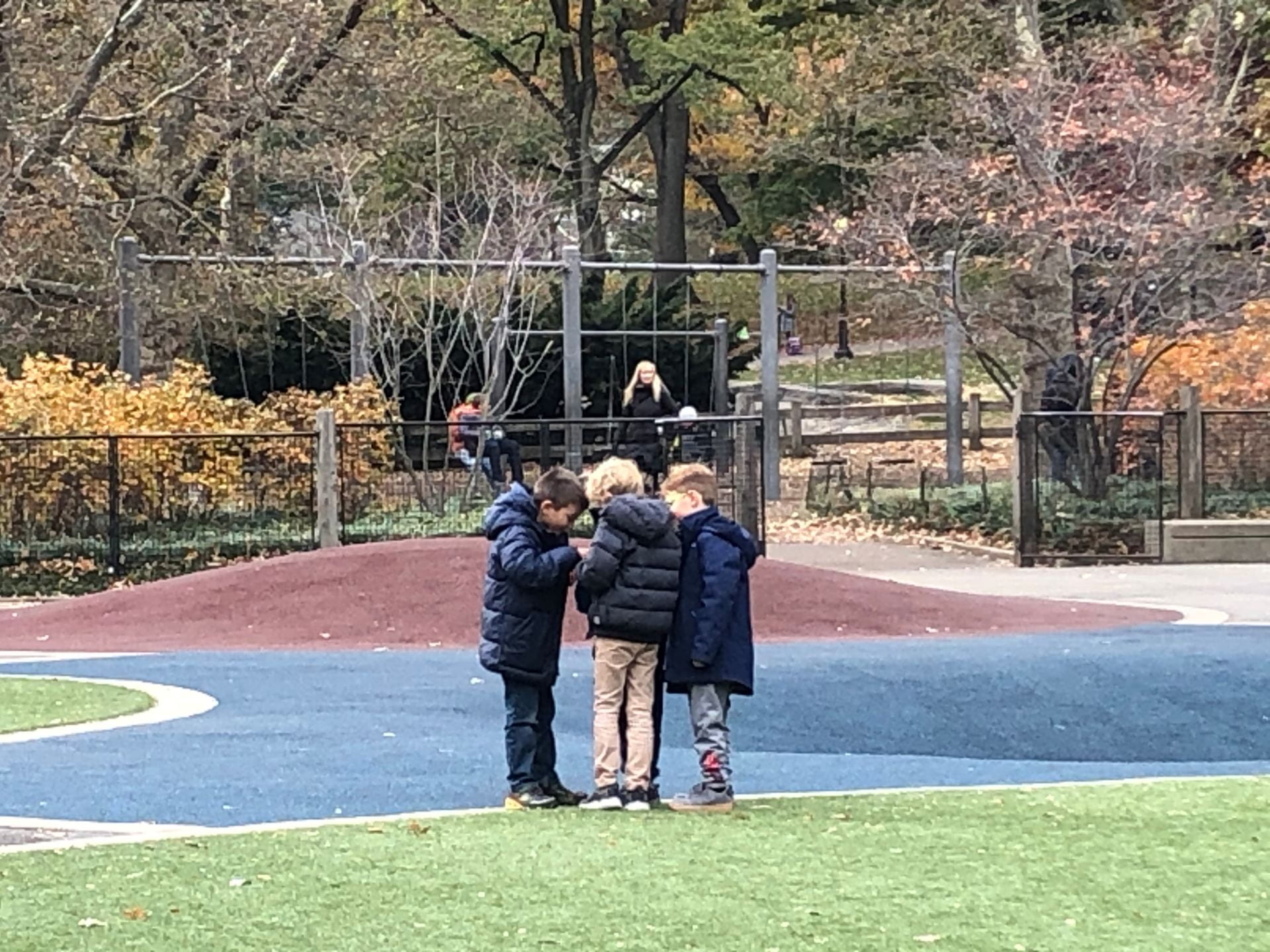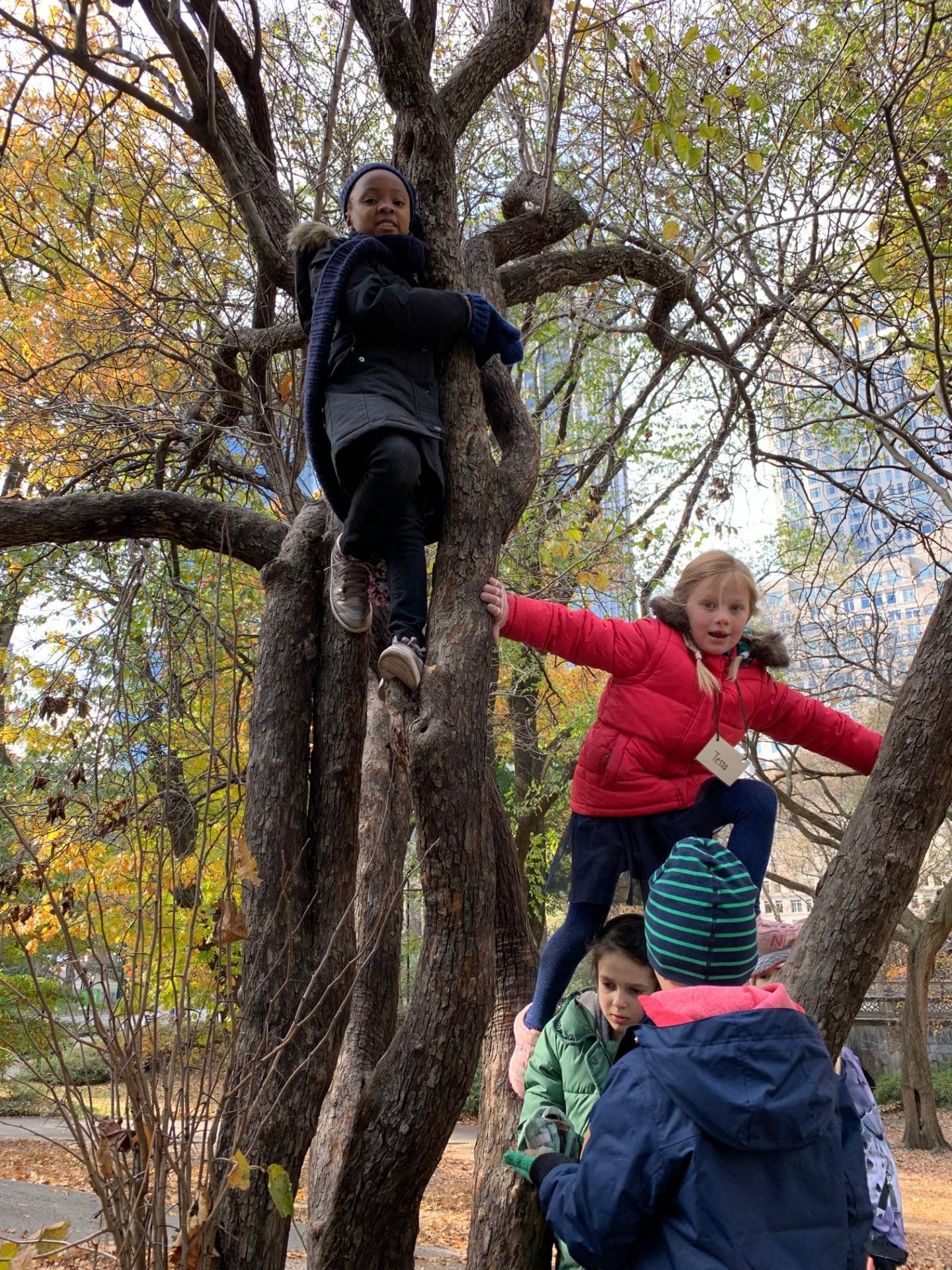As I continue to work on my tenure self-study project, I reflect on my journey so far and think about where I’m headed.
So far, we have as a class gone to explore and play in parts of Central Park, Washington Square Park and Prospect Park. So far, I’ve noticed that in natural play environments, the children seem to require less adult intervention and support to solve conflicts. I’ve been most excited to see how children who require more adult support to engage in play at recess, are able to more naturally find their own entry points to play in natural environments. These children enjoy joining others in collecting interesting rocks and sticks, observing animals, or scratching pictures in the dirt with sticks. One child said to me, “Ariane! I noticed that when you hit the tree with a skinny stick it makes a higher sound but when you hit the tree with a bigger stick it makes a lower sound.” Wow!
Some highlights during a recent trip to Nellie’s Lawn in Prospect Park: a group of boys collecting sticks and stacking them against and on top of a rotting tree trunk to build a “fort,” a mixed-gender group of children running up a small hill over and over again and enjoying hearing themselves screaming as they run down, a mixed-gender group of children seeing who can find and carry the biggest stick.
My biggest challenges so far have been navigating the weather and gathering the courage to take the risk to try something new and take my class places I haven’t gone before. It has helped to pre-trip these play areas, to find interesting landscapes for the class to enjoy, make sure there are bathrooms accessible close by, and that we’re not too far from public transportation. In regards to the weather, it has helped to prepare parents with an email beforehand, reminding them to dress their children in layers, appropriate footwear, and to pack a bottle of water for their child.
Visiting Brooklyn Nature Days, a forest preschool in Prospect Park was a wonderful experience that helped me get over some of my fears, confirmed some things I was already doing well, helped me figure out some logistics (clothing, bathrooms), and push my thinking about this experience even further. Why can’t we sometimes teach outside? Or as Tammy (4’s teacher) shared recently, what about using “nature as the 3rd teacher” for the class. To that end, I have scheduled a trip for my class with Naturally Curious Walks, where we will explore and play in a section of Prospect Park and think about how a park can also be a place of learning.
Moving forward, I would like to push myself to make more formal observations, such as using a checklist to mark what students are playing, who they are playing with, and any conflicts that arise and what types of conflicts they are. While we already take pictures and type up student reflections after each trip, it would be good to take more notes and document the play as it is happening so that I can more directly contrast it with playground play. I would like to push myself to think about how I can foster more of a curious and exploratory mindset to our play and explorations, and loop back to these observations afterwards when we return to school. Finally, I am also excited to be part of a committee to rethink the future of our Roof space at LREI.






Ariane, thanks so much for digging into this work. The idea of the “third teacher,” which is core to the Reggio Emilia approach is essential to our work as progressive educators. How we design spaces for learning and or move learning into spaces beyond the classroom is central to our lives as teachers and learners. It is something deeper than creating or visiting pleasant spaces (though this is certainly better than being only in “unpleasant” spaces). When we open ourselves to the possibilities of what space and material can provide for learners, we create new possibilities for experience. In the context of the self-study, I wonder what happens to us as practitioners when we make ourselves fully available to these “third teachers?” This is already evident in your awareness of courage, risk, something new, and fear that emerge when we move into new areas of exploration and inquiry. When you say, “I would like to push myself to think about how I can foster more of a curious and exploratory mindset to our play and explorations, and loop back to these observations,” I think it is essential that see this as a two-fold invitation: one, to explore more deeply how we design learning for our students and two, to explore how this work changes us as teachers and learners.